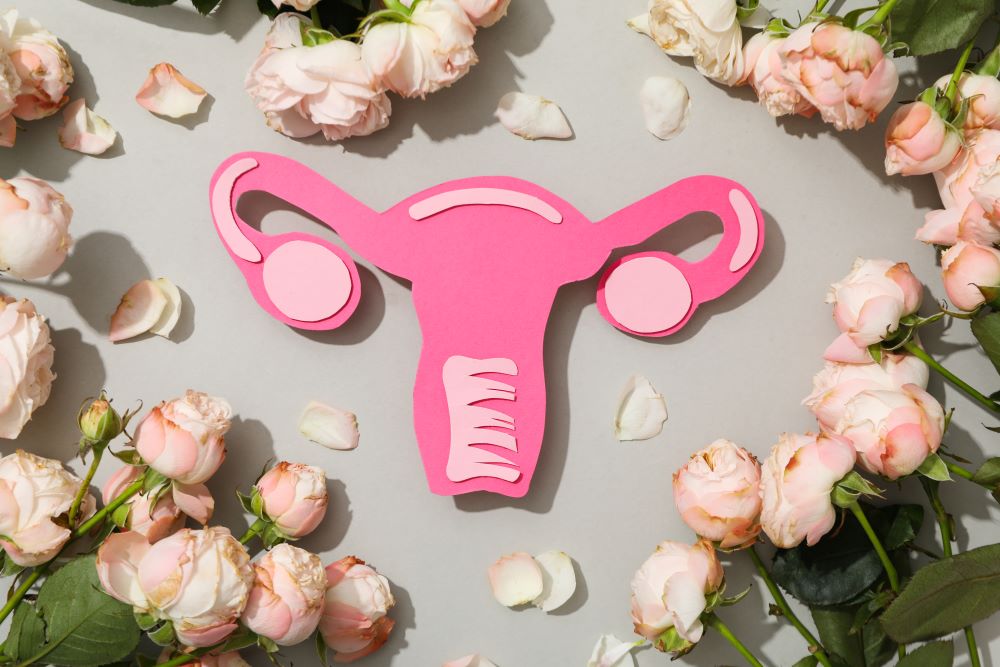How to use Ovulation predictor kits (OPKS)

In our journey from adolescence to adulthood, we often focus on preventing pregnancy through methods like condoms and birth control pills. But when the time comes to conceive, the process can be unexpectedly challenging. It’s not as simple as having intercourse at any time; timing is crucial, especially if you’re trying to conceive.
Understanding the intricacies of conception is crucial, especially when you transition from using birth control methods to actively trying to conceive. This is where Ovulation Predictor Kits (OPKs) become invaluable.
OPKs help identify the most fertile period in your cycle. They are particularly useful in situations like irregular work schedules, limited time due to busy lifestyles, or irregular menstrual cycles.
Using an ovulation prediction kit is essential when you’re actively attempting to conceive. Proper use of this kit can accurately inform you of when you’re approaching ovulation – the phase in your cycle when fertility is at its peak. This knowledge is crucial as it indicates the optimal time for conception.

What Exactly Is Ovulation?
Ovulation is the process where your ovaries release at least one egg. This happens monthly, with about 15 to 20 eggs maturing in your ovaries. When the time is right, typically one of these eggs is released into the pelvic area and enters the fallopian tube, where it awaits potential fertilization by sperm.
The egg’s viability is brief, lasting only 12 to 24 hours after its release. To maximize the chances of conception, it’s best to have intercourse before the egg is released, ensuring that sperm are already in the fallopian tube, ready to fertilize the egg as soon as it arrives. If intercourse occurs only after ovulation, the chances of becoming pregnant are reduced due to the egg’s reduced viability. Thus, timing intercourse before ovulation is key to enhancing the likelihood of pregnancy.
How Long Before Ovulation Should Intercourse Happen?
Considering that sperm can survive in the reproductive system for several days, with healthy sperm typically lasting about five days (occasionally even longer), it’s crucial to plan accordingly. Particularly, the healthiest sperm with strong motility, capable of swimming swiftly and directly, are the ones most likely to remain in your system, awaiting the release of an egg.
Given this understanding, the ideal period to begin attempting conception is approximately six days before ovulation. During this six-day window, it’s advisable to engage in sexual activity every 2 to 3 days. Avoiding daily intercourse is important as it may diminish sperm count, potentially reducing the chances of conception.
However, it’s important to maintain a balanced perspective. Over-focusing on the timing can transform sexual activity into a task rather than a pleasurable experience. Engage in intimacy not just for conception but also as a means of maintaining a close connection with your partner. Enjoy the moments together after menstruation or during the luteal phase, keeping the experience enjoyable.
Also, bear in mind that excessive stress about conceiving can adversely affect both you and your partner physically. Striking a balance between having sex for pleasure and for the purpose of starting a family is key. Utilizing ovulation kits can aid in this process, providing guidance on the most opportune times for conception while allowing for the enjoyment of intimate moments throughout your cycle.
What Are Ovulation Kits And How Can They Really Help?
Ovulation Predictor Kits, commonly known as OPKs, are designed to identify the fertile period in your menstrual cycle. While it’s crucial to recognize that limiting sexual activity to only these fertile days might reduce the enjoyment of intimacy, OPKs shouldn’t dictate your sexual schedule. However, they are particularly beneficial in certain scenarios, such as:
- If your partner has an erratic work schedule or frequently works overtime, making regular time at home challenging. An OPK can alert you to the approaching fertile window, allowing you to request your partner to adjust their schedule accordingly.
- In situations where both partners have demanding schedules, possibly juggling work and family responsibilities. An OPK helps identify the crucial fertile period so you can plan your time effectively.
- For women with irregular menstrual cycles, determining ovulation can be difficult. OPKs are helpful in signaling when the fertile period is approaching for those with non-regular cycles.
While other methods like monitoring basal body temperature or checking cervical mucus texture exist, they may be cumbersome or less accurate, especially for women with irregular cycles. OPKs, on the other hand, offer a quick, precise, and user-friendly means to ascertain the most fertile days in your cycle. You can usually detect your fertile window from the first month of using an OPK, as opposed to the longer duration required to establish a pattern with basal body temperature.
OPKs are readily available in drugstores, supermarkets (near the pregnancy tests), and online, providing an accessible tool for those planning to conceive.
How Do Ovulation Prediction Kits Work?
Ovulation Prediction Kits come in two main types: urine-based and salivary ferning. The urine-based OPKs function by measuring the luteinizing hormone (LH) in your urine. LH is always present in small amounts, but its levels spike significantly, about 2 to 5 times the usual, roughly 48-72 hours before ovulation. This surge in LH is a key indicator that ovulation is imminent. When the OPK detects this surge, it indicates that you are entering the most fertile phase of your cycle, which is about 12 to 36 hours before ovulation, enhancing the likelihood of conception during this period.
On the other hand, salivary ferning OPKs operate on a different principle. These involve a compact, portable microscope to examine your saliva. Unlike urine-based kits, they do not measure LH levels. Instead, they detect changes in estrogen levels reflected in your saliva. As estrogen increases, so does the salt content in the saliva. When the saliva dries, the salt crystallizes, forming a fern-like pattern. The presence of this pattern is a signal that ovulation is approaching, providing a unique and visual way to predict your fertile window.
Which OPK Is Right For Me And How Do You Use Them?
Selecting the appropriate type of Ovulation Prediction Kit (OPK) is a personal decision, but it’s important to understand the nuances of each type before making your choice. Let’s first consider urine-based OPKs. These require you to either urinate into a cup or directly onto a test stick. The test indicators vary, displaying colored bands or specific symbols (like a smiley face in some digital versions) to signal an LH surge.
Using urine-based OPKs is quite straightforward, though instructions can slightly vary across different brands. The ideal time for urine collection is between 10 am and 8 pm, with the optimal testing window being around 2 to 2:30 pm. Consistency in testing time is key for accuracy. Avoid using these tests immediately after waking up, as you might miss the LH surge. It’s also advised to limit fluid intake a couple of hours before testing to prevent diluting the urine, which could lead to inaccurate results. Make sure to read the test results within 10 minutes to avoid misinterpreting evaporation lines as positive results. Once used, dispose of the test immediately. Generally, these kits provide enough tests for a full cycle, with 5 to 9 days’ worth of tests.
Salivary ferning OPKs are comparatively simpler to use. First thing in the morning, before eating or drinking, place a small amount of saliva on a slide, ensuring there are no bubbles. After the saliva dries, examine it under the microscope to check for ferning patterns.
Before starting with any OPK, it’s crucial to be aware of your cycle length. This knowledge, combined with an ovulation calculator, can guide you on when to start testing for your fertile window.
Other Important Things To Know About Ovulation Prediction Kits
Choosing the right Ovulation Prediction Kit (OPK) is a personal decision, but it’s important to be aware of certain factors that might influence their effectiveness. If you are using fertility drugs, especially those containing the pregnancy hormone human chorionic gonadotropin (hCG), they can affect the accuracy of LH surge readings. This is something to consider as it may lead to misleading results. Similarly, medications like Clomid can impact the results of salivary ferning OPKs.
It’s also worth noting that if you have vision impairments, reading the results of salivary ferning tests might be challenging due to the finer details involved.
In terms of accuracy, urine-based OPKs are generally considered to be more reliable compared to salivary ferning kits. However, they are not infallible. False LH surges can occur with urine-based kits, where the hormone level rises but no egg is released, meaning ovulation may not actually occur. These false surges can sometimes precede the actual LH surge, so it’s important to be aware of this possibility and use the kits as part of a broader understanding of your cycle.
Are Ovulation Prediction Kits Expensive?
Urine-based Ovulation Prediction Kits typically range in price from $20 to $50. The choice of which one to buy largely depends on your budget, and it’s important to note that higher-priced OPKs are not necessarily more reliable than their less-expensive counterparts.
Salivary ferning tests tend to be pricier due to the inclusion of a microscope, which is a long-lasting and reusable component. However, if you are trying to conceive over an extended period, such as more than two years, you may need to replace the kit.
Each kit is accompanied by FAQs and instructions for use. It’s crucial to remember that once an LH surge is detected, there’s no need to continue testing for the remainder of the cycle. Overuse of the tests can lead to unnecessary expenditure, especially if you find yourself purchasing more kits over time.
For those planning to conceive soon, understanding the availability and utility of these kits can be a valuable addition to your fertility planning toolkit, aiding in pinpointing your ovulation period.






Responses